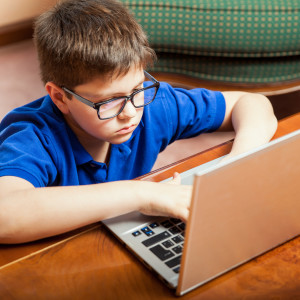Back-to-school season doesn’t feel or look the same this year. With COVID-19 still wreaking havoc across the country, most schools in the United States are including some amount of online “distance learning” this fall.
This new paradigm forced on education by the pandemic underscores the problems caused by the “digital divide”— the split between those who have access to computers and the internet and those who do not.
One especially harmful aspect of the divide lies in what was called the “homework gap” before the pandemic, named to describe the lack of internet connectivity needed to complete school assignments at home among millions of students.
However, with the pandemic now forcing students to rely on distance learning during the school day, students don’t just lack access to tools needed to do schoolwork after the last bell rings, but to access any learning. What was once a gap between well-resourced and at-risk students is now a chasm.
According to a recent analysis by Common Sense and BCG, the pandemic-exacerbated homework gap is even greater than our lawmakers realized. Because of COVID-19 school closures, 50 million K-12 public school students have had to learn remotely from home — but about 30 percent, or as many as 16 million, are without adequate internet or the devices they need for effective distance learning.
Some nine million of these students lack both adequate internet AND the devices they need for at-home learning. And the homework gap doesn’t end there, as Common Sense found that between 300,000 and 400,000 teachers also lack an adequate connection required for distance teaching.
The homework gap is especially devastating to the most vulnerable children in America. New York City alone has more than 114,000 unhoused and highly mobile students, meaning about 10 percent of the students in New York state are unable to access consistent broadband internet because they lack a permanent address.
We need to act now to prevent the homework gap from becoming an educational sink hole for a generation of children. It’s estimated that students lost nearly one-third of their learning gains from last year in reading since the pandemic forced schools to shut down. In math, they lost more than half of those gains (in lower grades, students may be nearly a full year behind compared to normal conditions).
Broad stakeholder action across all levels is necessary to solve the homework gap problem. Public-private solutions can positively impact individual students across the country.
The Arkansas Department of Education (ADE), for example, signed agreements with AT&T and T-Mobile to purchase Wi-Fi access points and data plans at a reduced cost (about $20 per month per device) for every school district in the state.
ADE will allocate the devices to each school district based on enrollment, then the school districts will distribute the devices to students — based on need within the community — who will receive the devices and high-speed internet access with unlimited data at no cost.
The project will be funded with $10 million from the Governor’s Emergency Education Relief (GEER) Fund, provided through the federal CARES Act program. Another creative solution, many districts across the country are re-purposing Wi-Fi-equipped buses to create community internet hotspots until broadband reaches every household in America.
In the next COVID-19 relief package, Congress should provide direct support for distance learning and ensure those funds can flow quickly to students. Congress must equip teachers and students with support for devices and connectivity allowing for a learning environment that will flexibly meet the needs of their communities.
And as Congress continues to consider measures to support recovery and economic stimulus, they must make significant investments to deploy broadband infrastructure where it is not.
Easing the strain of the pandemic and closing the homework gap isn’t going to come cheap. Common Sense estimates that it will cost between $6 billion — $11 billion in the first year — but this is a small price to pay for the investment in our kids.
If there is anything the COVID-19 pandemic has taught us, it’s that other pandemics are likely to follow, and we need to take action now to not only alleviate the current crisis, but to prepare for the future.

